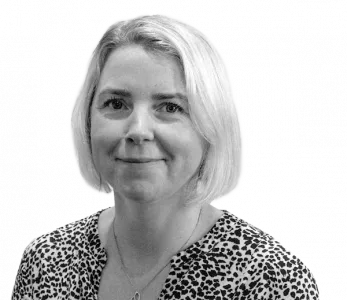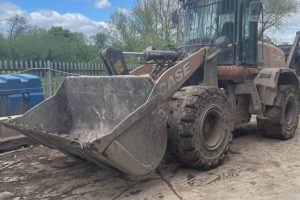The future of monitoring
Bob Latimer discusses the benefits of automated monitoring systems for airborne hazards as complimenting the role of health and safety managers and occupational hygienists.

Airborne hazards—including particulate matter, volatile organic compounds (VOCs), and noise pose significant risks in many workplace settings and can cause occupational illness such as respiratory ailments, hearing loss, stress, and cardiovascular conditions.
For example, estimates indicate around 12,000 deaths per year in Great Britain are attributable to historical workplace exposure to airborne hazards, which itself is part of a larger group of 1.7 million workers suffering from work-related ill health.1
Traditional monitoring methods have often been labour-intensive, episodic, and reactive in nature. However, as workplace environments evolve, so do the technologies used to detect, measure, and mitigate airborne threats. One example of contemporary innovation is the development of continuous environmental monitoring solutions capable of assessing workplace air quality and noise. Utilising IoT-enabled networks, such systems facilitate real-time data acquisition, analysis and automated reporting. Such advancements reflect a broader shift in airborne hazard monitoring—from reliance on reactive sampling methods alone, to the adoption of proactive, integrated data-driven approaches.
Critically however, these tools are not designed to replace traditional occupational hygiene risk assessments. Rather, they serve as powerful complements—providing continuous, reliable data that hygienists can interpret, contextualise, and use to guide interventions. This partnership between technology and professional expertise represents a very real future of workplace health and safety.
From static sampling to connected systems
Historically, workplaces have relied on:
- Static and personal sampling: Filters, pumps, or dosemetry that capture a moment-in-time snapshot—often insufficient for dynamic environments.
- Portable direct-reading onstruments: Devices such as standalone gas detectors or particulate monitors—responsive but typically narrow in scope, requiring manual readings and data processing.
These methods are invaluable, yet limited in frequency, scope, and scalability. That’s where next-generation technologies step in, offering continuous monitoring of airborne and noise hazards across spaces—no manual inputs required – automated, detailed reports by metric, work shift or operator. The role of the health & safety managers and occupational hygienists remains central, but with richer data available, their decisions become sharper and more evidence-driven.
Emerging technologies in action
Integrated environmental monitoring systems typically comprise an IoT gateway and area monitors equipped with sensors such as noise, particulate matter and total volatile organic compounds (TVOCs). Some such devices can also serve as a central data hub, capable of connecting with mobile and remote devices through wireless communication networks. Specialised ‘satellite’ monitors for noise and workplace air quality, which can function as wearable personal exposure dosemeters or remote fixed monitoring devices—each interoperable within the same system architecture.
This design approach enables real-time, area-wide visualisation of environmental conditions with automated reporting.
The ASYS dBELL100 system is one example of a design that embodies the trajectory toward IoT-enabled monitoring: a central hub collecting multi-parameter data, augmented by mobile or wearable units to capture localised exposures. Health & safety managers and hygienists with access to this system can augment one-off sampling exercises with the data-richness of 24/7 networked devices to highlight problem areas where their expert analysis and interventions are most needed.
Real-time data collection
Systems such as the ASYS dBELL-100 continuously record exposure metrics, feeding them to cloud applications which offer real-time snapshots, trend charts, configurable alarms, data exports, and automated reporting; demonstrating how workplace monitoring is evolving from intermittent checks to include 24/7 automated surveillance allowing occupational hygienists to assess these signals, determine whether they reflect true hazards, and advise on engineering or administrative controls.
Baseline establishment and trend analysis
By deploying such monitoring ecosystems, it is possible to develop comprehensive environmental baselines across workspaces. Continuous monitoring allows early detection of anomalies (such as unexplained spikes or trends in particulates and noise), that could indicate equipment failure or process deviations.
This stream of data enables hygienists to move from reactive investigations to proactive, evidence-based decision-making. Instead of spending days collecting data, they can spend their time analysing patterns, identifying problems and designing interventions. Crucially, these systems provide health & safety managers with more robust evidence, allowing them to better justify control measures, support compliance audits, and demonstrate the effectiveness of interventions. Far from replacing professional expertise, these tools extend and empower it.
One of the most important points when considering advanced monitoring systems like the ASYS dBELL system is that they are not designed to replace the expertise of health & safety managers and occupational hygienists. Instead, they provide tools that complement and enhance professional practice.
Health & Safety managers professionals bring critical skills that technology cannot easily replicate on its own:
- Interpretation of data in context: A sensor might randomly report elevated particulate matter in a specific workspace, but an experienced occupational hygienist will be able to assess whether it originates from an out-of-control process emissions or improper changes to work practices.
- Risk assessment and strategy: Hygienists translate monitoring results into actionable strategies, such as engineering controls, administrative changes, or PPE recommendations.
- Compliance and worker engagement: Interpreting regulations, liaising with regulators, and communicating effectively with workers, requires human judgment and experience.
Technologies like the ASYS dBELL system strengthens this expertise by providing:
- Continuous baselines: Long-term environmental data that hygienists can use to spot patterns and trends.
- Real-time alerts: Highlighting hotspots or emerging risks quickly, directing focused investigations where they matter most.
- Automated reporting: Reducing administrative burdens and freeing hygienists to concentrate on higher-level health strategies.
- Scalable deployment: Allowing health and safety managers to extend their reach by monitoring multiple sites or work zones simultaneously.
In this way, solutions such as the ASYS dBELL system are not substitutes but a force multiplier: helping hygienists work more efficiently, make decisions based on richer evidence, and ultimately safeguard workers’ health more effectively.
Challenges and considerations
Costs and accessibility
While such systems bring powerful capabilities, affordability for SMEs may be a concern. However, the modular nature of these solutions can help scale cost-effective implementations. Hygienists can advise on the most strategic placements of monitors and the configuration and timing of automated reports to maximise value.
Standardisation and regulatory integration
While core sensor technologies must comply with relevant and recognised standards, for example IEC 61672 for noise sensors, widespread adoption of new technologies often precedes formal regulatory frameworks. Here again, health and safety managers and occupational hygienists play a key role in interpreting how continuous data aligns with regulatory requirements.
Data privacy and trust
Continuous monitoring raises privacy questions. Employers must ensure personal data (e.g., worker-specific exposures) is used for safety, not punitive oversight. Hygienists, trusted as advocates for worker health, are well positioned to help establish and communicate fair but effective policies.
Training and user adoption
Deploying advanced monitoring systems only succeeds if staff understand how to interpret data, respond to alerts, and integrate insights into safety workflows. Hygienists are essential trainers and champions in this process.
The road ahead
Reflecting on global technology trends and real-world systems, the following areas will continue to benefit from innovation.
- Integrated IoT sensor networks spanning multiple environmental metrics with AI-assisted predictive risk mapping.
- Smart PPE—respirators or helmets equipped with integrated sensors feeding real-time data into facility systems.
- Automated environmental responses: ventilation/extractions systems adjusting based on sensor inputs, alarms triggering protocol changes.
- Cloud-based Augmented Reality dashboards accessible via mobile devices assisting the hygienist with incident analysis or compliance deviations.
Conclusion
The future of airborne hazard monitoring is evolving to include continuous, networked, intelligent systems—a shift from purely reactive checks to proactive workplace health oversight. The ASYS dBELL100 system and its IoT ecosystem provide a tangible example of this evolution, offering real-time, scalable, and integrated monitoring of workplace air quality and noise.
Yet even as monitoring technology advances, the role of occupational hygienists remains at the heart of workplace safety. Far from replacing them, systems like ASYS dBELL empower hygienists with continuous evidence, freeing them to focus on higher-value work: interpreting trends, designing interventions, and advocating for worker health.
The ultimate vision is a partnership between technology and professional expertise, leading to healthier workplaces, safer employees, and fewer lives impacted by invisible airborne threats.
Bob Latimer is a product engineer at National Photonic ltd. For more information visit www.nationalphotonic.co.uk
References
1 HSE Statistics 2024, Work-related ill health and occupational disease in Great Britain.
HSM publishes a weekly eNewsletter, delivering a carefully chosen selection of the latest stories straight to your inbox.
Subscribe here





